5 Heavyweight Backpacking Gear Items You Can Replace With Ultralight Alternatives
One way to reduce your pack weight is to get rid of unnecessary gear. The other way is to replace essential gear items with lightweight alternatives, that work just as well.
Here are five gear items you can replace to reduce your pack weight:
1. Freestanding Tent (3 pounds)

Freestanding Tent (MSR Hubba)
The lightest one-man freestanding tents are around 3 pounds. 2-person tents are around 4 pounds. That is pretty impressive considering all the materials that go into them (poles, mesh, rainfly, guylines, stakes, etc).
But, many of the benefits of traditional tents (ease of pitching… protection from weather, bugs and wind… sturdiness and durability) can now be found in other types of backpacking shelters weighing half as much.
The comfort and homely feeling of a tent is nice, and freestanding tents are more practical for two people than one (because the weight can be divided). But, if you don’t want to carry the weight you don’t have to.
Ultralight Alternative: Tarp-tent or Tarp (1.5 pounds)

Tarp-tent (SMD Lunar Solo)
Tarptents provide full protection from rain, wind and bugs at a fraction of the weight of traditional tents. A one-man tarptent typically weighs only a pound and a half. Two-person tarptents are not much more, weighing in at just over 2 pounds with enough room inside for two hikers, their gear and the dog.
A two person tarp such as mine weighs just 13 ounces, but when combined with a ground cloth and removable bug tent weighs about as much as a tarptent. I like a tarp because it provides more space, ventilation and pitching options. I leave the bug tent home in places where mosquitoes are not a problem, to save weight.
2. Hiking Boots (3 pounds)
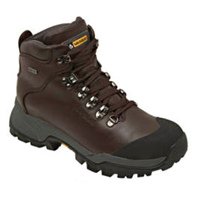
Hiking Boots (Vasque Sundowner)
If this were 1992 and I were Ray Jardine, I would have to make an impassioned plea for abandoning heavy leather hiking boots. Luckily this is 2011 and, with the exception of a few holdouts and contrarians, the boots vs. shoes argument has already been settled.
Boots are no longer the preferred footwear for backpacking… and with good reason. Boots are hot, heavy, stiff and abrasive. No other piece of gear is responsible for more foot pain and blisters.
Unless you’re hiking hundreds of miles of scree fields with an 80 pound pack, the excuse that boots are necessary foot “support” and “protection” is a myth.
Ultralight Alternative: Trail Runners (1.5 pounds)
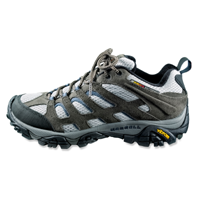
Cross Trainers (Merrel Moab Ventilator)
Trail runners (and cross trainers) provide adequate protection for the feet from all but the most rugged terrain. They are flexible, breathable and most importantly… comfortable.
I’ve hiked thousands of miles in trail runners with nary a blister or foot problem. They are the preferred footwear among thru-hikers and long distance backpackers on trails like the Pacific Crest Trail and other long trails.
The only downside to trail runners is they are not as long-lasting as boots. In my experience, you can get 500-1,000 miles out of a pair before they need to be replaced. But the added comfort is well worth it.
3. Fleece Jacket (18 ounces)

Fleece Jacket (The North Face Khumba)
If your backpacking clothing system includes a base layer, insulation layer and shell layer (as it should) then a jacket is not that important by itself. Your insulation layer should work in conjunction with all of your other layers to keep you warm.
Fleece jackets are fuzzy, warm, semi weatherproof and great for blocking wind. When I’m at home in the fall and winter time I never leave the house without my fleece.
But a fleece is not the best choice of insulation layer for ultralight backpacking. They are heavy, bulky, and take up too much room in your pack. There are lighter options for torso insulation that are even warmer.
Ultralight Alternative: Puffy Jacket or Vest (5-10 ounces)

Down Puffy Jacket (WM Flight Series)
Puffy jackets and vests consist of a nylon outer shell and high loft insulation (down or synthetic) much like a sleeping bag. They weigh half as much as a fleece and compress down to the size of an orange.
When they loft up they provide a thicker insulation layer than fleece, so this is one of the instances where a piece of gear is not only lighter weight, but more effective than it’s heavy counterpart.
Down is lighter and warmer, but doesn’t insulate well when wet. Synthetic is not as puffy or warm, but it stands up better to moisture. I wear a synthetic vest, but know many hikers who swear by their down jackets.
4. Specialty Water Bottle (6 ounces)
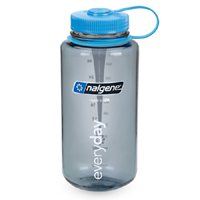
Specialty Water Bottle (Nalgene)
Specialty water bottles are a perfect example of over-engineering something simple. They are made from high-tech plastics and even metals which make them indestructable and supposedly more healthy to drink from. They also weigh a ton (for a water bottle).
As for the supposed health benefits (BPA free, non-leaching plastics and whatnot) that might make sense, except for that fact that we all drink water and other beverages from plastic containers without those safeguards all of the time. It doesn’t make much sense to drink out of a specialized container on the trail and then go home and drink Aquafina and Pepsi from cheap plastic bottles every other day of the year.
Ultralight Alternative: Soda/Water Bottle (2 ounces)
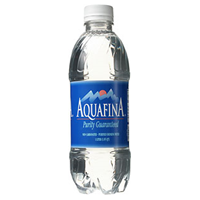
Cheapo plastic bottle (Aquafina)
Lightweight plastic water or soda bottles from your local convenience store (like the kind Pepsi, Aquafina or Gatorade come in) will do the same job of storing your water at a fraction of the cost and weight.
I always carry my water in cheap plastic bottles like this and have never had one bust or spring a leak. They are designed for storing and carrying liquids and they hold up to abuse surprisingly well.
If you do manage to lose or break one (or it gets too gunked up to keep using) you can get a replacement for 99 cents at any store on the planet. And you get to drink whatever came inside for free!
5. White Gas Stove (14 ounces without fuel)
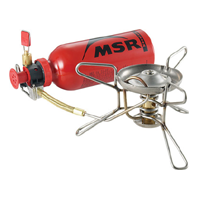
White Gas Stove (MSR Whisperlite)
White gas stoves like the MSR Whisperlight shown at left (which is neither light, nor could it’s high pitched howl be considered a whisper) are great for camping and outdoor expeditions where you don’t have to carry your gear very far on your back.
They are extremely efficient, fast to cook and can run on various types of fuel, making them very flexible. But, they aren’t good for ultralight backpacking because they are heavy, a PITA to set up and prime, loud (which disturbs your campmates) and did I mention HEAVY?
There are better backpacking stoves that are less expensive, less complicated and weigh half as much.
Ultralight Alternative: Canister Stove (7 ounces without fuel)

Canister Stove (MSR Pocket Rocket)
Canister stoves like the MSR Pocket Rocket actually only weigh about 3 ounces, but I included the weight of an empty fuel canister (3-4 ounces) to be perfectly fair in comparison to the white gas stove.
Weight savings aside (which are substantial) canister stoves are a better backpacking stove in my opinion, because they are simple and easy to use. Simply screw the stove on top of the canister, turn the valve, light the burner and you will be enjoying your Macaroni and Cheese or Liptons in no time!
No priming, pumping, shaking or waking up your hiking partners at 6am when you want to brew a cup of coffee.
How Much Weight Can You Save This Way?
If you start out with a freestanding tent (3 lbs), Hiking Boots (3 lbs), Fleece Jacket (18 oz), two Nalgene Bottles (12 oz) and a White Gas Stove (14 oz)…
and swap them out for a Tarptent (24 oz), Trail Runners (24 oz), Puffy Vest (5 oz), two Aquafina Bottles (4 oz) and a Canister Stove (7 oz) you would save…
…4 pounds, 12 ounces!
Not too shabby for five minor gear adjustments (and only one of them in “The Big 3”) 😉


 My name is Erik Asorson, aka "Erik the Black." I'm a long-distance backpacker, cartographer and author of
My name is Erik Asorson, aka "Erik the Black." I'm a long-distance backpacker, cartographer and author of 

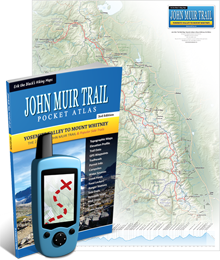
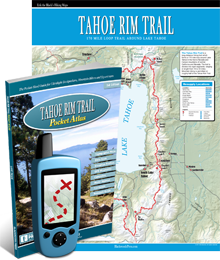
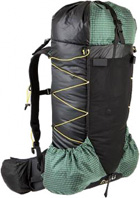
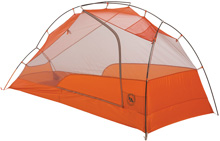
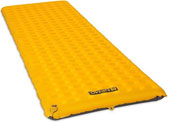
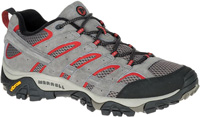

Thanks for the tips, but in my experience (or, fortunately, let’s say lack of it), I am not as convinced with some of these suggestions. I have an open mind and welcome comment. Boots — I have been on hikes where my compadres have wet feet for 7 days and mine are dry, thanks to my water-proofed heavy leather boots. Would not trade that for the world, particularly when it is cold. Bottles — why no discussion of what happens when your light weight bottle breaks in the middle of your trip? Could be game over — if you have ever hiked 12 miles in tough hot terrain between water sources, you know what I mean. I would certainly consider replacing my Nalgene, but it has never broken and I’ve had it 20+ years. Finally, any suggestions for a lightweight 5-piece fishing rod case? Help me out! Thanks.
I’ve been hard-pressed to find a lightweight and wide-mouth bottle for my Steripen Opti. It won’t fit in the Powerade bottles. I found something suitable — the Planters Peanuts jars are now made of lightweight plastic. It weighs 1.95 oz, and holds 800 ml, with a Steripen Opti suitable mouth. The Planters lid can actually screw onto your old hard Nalgene 1 ltr wide mouth polycarbonate bottle. Same size, no leakage, in case you were wondering. Hope this info helps some hikers.
Here’s my old system:
REI Clipper Tent: 5 pounds
Hi Tech self inflating pad : 2 pounds
REI Shasta 15 degree bag : 4.5 pounds
Sigg fuel bottle full of fuel : 2 pounds
Whisperlite stove : .5 pounds
Stainless Steel cook pot with heat exchanger : 1.5 pounds
Kelty Trekker pack : 4.5 pounds
Total 23 pounds
New system:
D.I.Y. hammock : 1.5 pounds
D.I.Y. SilNylon tarp 1.2 pounds (with stakes)
grey ensolite pad : 1.5 pound
The same Sleeping bag : 4.5 pounds
Aluminum can alcohol stove : 1 ounce
Fosters Lager can cooking pot : 1 ounce
Granite Gear Crown pack : 2.5 pounds
alcohol fuel : .5 pounds
New total : 11.8 pounds
I’m going to build a down under quilt and top quilt to use in the hammock. That will weigh between 2.5 to 3 pounds but it replaces the ensolite pad and the sleeping bag for a loss of 3 more pounds. At that point the “system” weight will be below 9 pounds which is essentially what my old tent and empty backpack weighed.
But the main point is that I’m much more comfortable sleeping in the hammock than in a tent and I have a lot of versatility with the tarp which I don’t have with the tent. I didn’t have to make a choice between “how much suffering can I deal with?” and “How little weight can I carry?” I ended up carrying less weight and being MORE comfortable both on the trail and in camp.
Greg B: Nice gear list. Thanks for posting. I couldn’t agree more. Lightweight doesn’t have to mean sacrifice and discomfort. I recently started riding dual sport motorcycles and realized that I could carry a ton more weight than I do while hiking if I wanted to (just strap it to the bike). But, despite the increased carrying capacity, I still find myself using all of my ultralight backpacking gear because it works so well. It does not feel like a sacrifice or a compromise at all.
Erik:
I used traditional hiking boots on the West Coast trail and the North Coast trail, among other hikes lasting 6-10 days. I’m planny a PCT trip and I’m wondering if trail runners would be better for the drier, hotter sections, and then a more trad boot for the mountains and into Oregon. Do you know of PCT hikers switching up footwear at the halfway mark?
Also, I’m really getting a lot of good 411 from your blog, and I’m no novice.
@Eggyolk: It’s rare for PCT thru-hikers these days to wear boots. Most hikers find one model of shoes that they like, that fits well and wear the same model of shoe for the entire trail. Since trail shoes are less durable than boots a single pair will not last the whole hike. You’ll need 3-5 pairs. Each pair lasts 500-1,000 miles before they get worn out. I have known a few hikers to wear boots because they carry heavier gear or have ankle problems and want the extra support. But unless there are extenuating circumstances there is no real benefit to boots.
If you want something that is halfway between a traditional boot and a trail shoe check these out: Merrel Moab Mid XCR The Merrels (in both the ventilator and XCR versions) are very popular among thru-hikers. They are comfortable and breathable like shoes, but tough and supporting like books. I wear these (in the low top version).
Good info. I think the BPA thing is important though. Especially for people who are going to be out in the sun for hours. I always thought the plastic non BPA bottles said dont refill to get more money from you. However, the real reason is because the longer it is exposed to the elements, the more the chemicals in the plastic is going to break down and be chemically contaminating. Its a lot different than getting a plastic bottle of pepsi or something from the fridge in the market, and immediatly drinking it. To test this out, leave one bottle of water in the hot sun for 5 hours, and put it back in the fridge. Have another bottle in the fridge never exposed to the sun. Then drink. Yep, you will notice a difference. And its not added Vitamin D from the sun! The weight difference is a lot though, so, I think everyone will have to decide whats right for them. Eventually, every bottle will be BPA free.
Appreciate your thoughts Erik. the lunar does sound quite spacious!
Thanks Bronco…i’ll have a look at zpacks site.
Cheers!
Trish, try Zpacks.com. You’ll find cuben fiber tents at less than a pound. Many have endured the AT.
Hey Erik,
I’m looking to get a 2 person lightweight tent but am having trouble deciding, and wondered if i might get your thought. I’m looking at the following:
tarptent double rainbow
lightheart gear duo wedge
six moons lunar duo
I’m wondering if one stands out? Are they all fairly easy to pitch? I’m sure any of them would do the trick… just can’t decide! 🙂
Thanks for any input.
Trish
Trish: I really like the Six Moons Lunar Duo. Some friends of mine (a married couple) carried this tent on the PCT and I noticed that it was amazingly roomy and sturdy. There is so much room in this tent that on several occasions 4-5 of us hikers would jump in there for a card game and we all fit comfortably. It is a palatial lightweight tent for about 2 1/2 pounds.
I have owned a Tarptent Rainbow before (the solo version) and it’s a pretty good tent, but I was not as impressed with it at the Lunar Duo. I have yet to try out the LightHeart Gear tents, but the Lightheart Solo will probably be my next shelter.
If I had to pick one I would go for the Lunar Duo.
Just curious about stove fuel. You used the MSR whisperlite stove on your PCT through hike. I’m planning to do Oregon this summer. How did you cache or send the fuel canisters since you aren’t supposed to mail them. Thanks for your good work
@Dave: I’ve never used the Whisperlite which is a white gas stove, but I did use a MSR Pocket Rocket on the PCT (which is probably what you meant). In places where stove fuel was not available I mailed canisters forward inside with my food boxes or bounce box.
You can send fuel canisters through the mail, but to do it legally you are supposed to send it by ground, declare it to the postal employee and mark the box ORM-D. I never did this. I put the canisters in my Priority Mail boxes, did not declare them, and sent them the same way as I would anything else.
There are a couple options for getting fuel canisters in places where they aren’t available:
1) Ship them by ground (Parcel Post) with the ORM-D designation
2) Break the rules and ship them Priority Mail along with your other stuff
3) Pack an extra fuel canister (or larger canister) when you know they aren’t available in the next town
hey just got your P C T pocket atlas great job looking forward to useing them this may through sept.
Erik,
I am a 54 year old novice hiker. Did a 40 mile stretch of the AT last Spring. Had a ball. Can you suggest a pack for a 3-5day trip, maybe one of the Osprey products? Thanks.
Blessings,
Dave Malone
@Dave: I am partial to Ultralight Adventure Equipment packs because they are lightweight, sturdy and have all the features I like in a pack. Osprey makes nice sturdy parks (I used to own an Aether 60 back in the day) but in my opinion they are too heavy and you don’t get anything extra for the weight. ULA offers several packs ranging from the 3 pound Catalyst down to the 17 oz CDT to accommodate different gear weights.
Eric, I’m wondering why Aquafina is the standard with most backpackers. Opposed to say an Evian (which frankly taste like it was pumped from the local swimming pool) or a Dasani water bottle? All these are liter sized bottles. Is the Aquafina more durable. It does feel a little stronger once given a squeeze. Appreciate your input. KG
@komodogadfly My guess is that the Aquafina bottles are so popular because they are so widely available. Most gas stations and convenience stores usually only carry a couple of brands of bottled water and Aquafina is usually one of them. They are more durable than Arrowhead bottles, which is usually the other option.
Hey Erik,
As usual your articles are thought provoking.
When you decided to go with the GG SilTwinn tarp, did you consider her twin sister (bad pun!) the Spinntwinn? I was wondering if you had a reason for going with one over the other.
@Bill I actually wanted to buy the Spinntwinn originally. But, when it came time to order my tarp it was sold out, so I went with the silnylon version. I’m happy I did though, because I’m kind of hard on gear and I feel like silnylon will stand up to my abuse a little better than Spinnaker would.
Paul! Thanks so much for your input! I really appreciate it. My timing all depends on when I get off the Wonderland Trail with my son. It has been a longtime dream of his. It is possible I can start th CO Trail the last week of August.
You asked about thunderstorms in the Colorado Rockies… I’m not from that neck of the woods, but the first time I went to CO was in September. Gerry Roach had e-mailed me that the “thunderstorm season”; normally ends about early September; he was right; I only got caught by one or two fairly innocent ones…
But by mid-September the weather in the mountains turns colder and the day after I climbed Longs Peak, it snowed in RMNP, making the Keyroute route on Longs “technical”.
The CO Trail skirts the higher summits, so there’s less risk of real snow problems in September than on the summits. I wouldn’t push things into October, however.
Eric, Can you tell me the appeal of using the sawyer inline filter compared to say the Aquamira Frontier Pro Filter or any other small filter on the market. What is the principal reason you like the Sawyer. KG
@komodogadfly I haven’t tried the Aquamira Frontier Pro Filter yet, but it looks like it works on the same basic principle as the Sawyer. One thing I noticed from reading the specs is that is has a “capacity” of 50 gallons. I’m not sure what this refers to, but I suspect that it may refer to the amount of water that can be filtered before the filter element needs to be replaced. If that is the case it would not be a great filter for long hikes, because it only takes about a month to go through 50 gallons. The Sawyer can filter thousands of gallons (it actually comes with a million gallon guarantee). The only maintenance required is periodic back-flushing when it starts to clog up (a sink attachment hose is included for this). But I could be misreading that capacity spec on the Aquamira.
@Paul Thanks for the Colorado Trail weather info!
Interesting how a water bottle and develop a cult status. I’m going to start looking on ebay for “Auqafina water bottles–rare wide mouth type.” I find myself squeezing bottles in the market to see if its the heavy plastic like the Gatorade bottles or the light plastic used for regular drinking water. What would be ideal for me is a 24-32 oz. light plastic bottle with a wide mouth. The weight difference between a water bottle and a Gatorade type bottle is surprising.
Check out the fully enclosed Sublite from TarpTent. The tent is only about 19oz. I hike in buggy and rainy conditions and I’m able to get me, my pack, and my dog in there comfortably. I was only able to test it out twice last year because of a condition I suffer from that precludes me from going on more and longer hikes. I suffer from the affliction called a Job. I do medicate with beer though.
Keep up the good work Eric, I live through you while I’m stuck home. All your advice is spot on.
PS: Where can I sign the petition to bring back the wide mouth Aquafina bottle?
Erik, great info (as usual). Have your JMT Atlas, and it has been an invaluable resource for planning our August 1 hike of the JMT.
Question and a comment:
Regarding boots, the JMT seems like it might be a difficult situation for trail runners — at least for us inexperienced hikers with ankles having much less than the tens of thousands of miles of training and experience of Erik the Black. Thinking specifically about the JMT, and assuming we will have the absurdly heavy base pack weight of 20 lbs (no incl. food, water & fuel) — will trail runners really work in the potential snow, water fords, and varied surfaces of the JMT?
Re tents, my wife’s a hard core Sierra Club hiker — she normally avoids tents but acknowledges that on the JMT it might be wise. But she’ll frequently point out that when calculating weight I need to remember that the weight of tents, stoves and some other items will be shared between us, so I shouldn’t sweat the details and that a four pound ultralight 3-season 2-person tent is going to be more than light enough.
Is she right, or will I be violating a law of lightweight backpacking physics?
Thanks, SG
@Greeny If you’re worried about twisting an ankle you might try a lightweight “hiking boot” like the Merrel Moab Mids. These are the same shoes I wear but with a high top. They are available for both men and women. They come in two versions: Waterproof XCR and Ventilator.
I’ve been wearing the low top version for years and I can’t say enough about them. I’ve tried both the XCR and Ventilator and had good experiences with both. The XCR is not completely waterproof (it’s a Goretex membrane), but does help to keep the feet drier in rain and when walking through snow. The ventilator version is great for hot,dry weather because the mesh panels let your feet breathe really well.
Both come with a Vibram sole that is thick enough to handle all sorts of terrain, although the midsole is very stiff. I recommend replacing the insoles with something cushier (especially if you will be lugging all that weight). My favorite replacement insole is Montrail Enduro Sole (all the support of Superfeet, but without the hardness).
On the JMT you might have to walk through some snow (depending on what time of year you are there and how much fell the previous winter) and you will definitely need to ford some creeks. So your shoes and feet are going to get wet and there is no way around it. Even heavy duty “waterproof” leather boots eventually soak through and when they do they become miserable, soggy, heavy, cold bricks attached to your feet.
Lightweight breathable shoes dry quickly, so you can walk across a creek or snowfield and after half an hour in the sun they’re back to normal. When I come to a creek I don’t change my shoes or socks or anything. Just slog right through it, walk out the other side and keep on going.
I think your wife is right on the money about the tent. If I was going to hike the JMT with my girlfriend I would take my 4 pound REI Quarterdome T2. The “per person” weight is comparable to a tarp-tent, and you will appreciate all that mesh for keeping those nasty mosquitoes out 😉
Eric! I recently purchased some Titanium Tite-Lite Tent Stake (with the shepherd hook) from GG. By replacing my old stakes with these I am going to shed some ounces. Are these shepherd hook style stakes the ones you use for staking? If so what I would like to know is, have you ever experienced problems getting them into ground, viz., compacted or rocky soil??? Are they okay to pound in with a rock if necessary? In general how do they hold up? If you can share any tips on how to get them into tough ground it would be much appreciated. Thanks KG
@Chuck I can’t remember if the Powerade bottles were a full quart, but pretty close I imagine. They aren’t really my favorite bottles. I don’t know if I will use them again. A little on the fat side, like you said, and the ribs are a double-edged sword. I like that they don’t fly out of the pack when I’m sliding around turns at 5mph (j.k. :P) But, it also makes it harder to reach around and pull them out for a drink. I will probably go back to Aquafinas since I like the shape so much, even though they killed the wide-mouth.
@Bronco Platypus bladders are great aren’t they? I usually carry a 2.4L Platypus in addition to water bottles for the longer water hauls.
@komodogadfly Those are the same titanium stakes I use. In most cases they are really easy to get in the ground. I just press them in with my hand or the sole of my shoe. Because they are so thin and sharp they go in like an icepick into butter. A few times I have ran into hard ground they wouldn’t go into (usually because there is a rock there). Pounding them doesn’t work because they bend too easily. But the good thing about a tarp is the stake positions can be changed without moving the shelter. If I can’t get a stake in I’ll just run the guyline out a little further and stake it where the ground is softer. That usually does the trick.
I gotta get my 2 cents worth in on the wide mouth Aquafina bottles. They are my favorites and I have noticed that they don’t seem to make them any more. I like that they are a full one quart besides the convenience of the wide mouth for filling. Last summer on the PCT I was at the drug store across from the post office at South Shore Lake Tahoe when I was looking over a whole bunch of Aquafina bottles in a display. Way at the back there were 2 wide mouth bottles. I snagged them as fast as I could. What a treasure. Are the powerade bottles a full quart? They are not as slim of a profile as the Aquafina bottles so don’t fit in the side pockets of my ULA circuit with as much space to spare. Wouldn’t mind finding some more so I don’t have to baby these as much.
As usual, great article Eric. Looks like a pretty common sense approach to a much discussed subject.
PS. Used your maps on the PCT. Really liked them. My only nitpic would be the profiles seemed to understate some of the trail grades on a few occasions. I brought Yogi’s pages for town info.
And by the way, Eric, we used two, one-liter Platypus Soft Bottles last summer. One ounce each. I fashioned a hose and mouthpiece to attach to one. Worked like a charm. We each also took along a half-liter wide-mouth Nalgene for Steri-penning questionable water and shaking up smoothies. Used a bio filter for the chunks. 18-days and no problems.
I have to agree with John Ladd on the boots. After hiking and general foot travel for 60-years those trail runners make my feet sore and tired after five or ten miles on trail. You don’t actually gain much weight wearing boots because most of the time one of them is on the ground. I also like the comfort of a tent. A good night’s rest and I’m ready for an extra pound.
And thanks for the JMT booklet. Used it and loved it last year. Taking it along this year too.
I understand your hesitation to recommend drinking untreated water. I was backpacking in the Olympic National Park with my son last summer and we filtered all of our water because it was highly recommended. Years past I would never treat my water, but like I said it is pressed upon us to do so now. Yet we never tasted such good water! Couldn’t stop drinking the stuff. To the point of craving it for weeks after. However, we treated it all the same, just to be on the safe side. I am hearing more and more of thru hikers not treating water for an entire trip. Knowing what’s best is something that comes with experience for sure. Thanks again KG
Thanks for the input on the Colorado Trail. I was recently watching one of your videos, in it you demonstrated your method of filtering water via a filter between bladder and mouth piece. In conjunction with said method I would like to know what you do to get water into a drinking bottle (viz,. Aquafina bottle) or ( titanium cup to boil). You demonstrated your method of drawing water when needed for usual hiking consumption but not how you get water from bladder to any other container, excepting your stomach. Can you elaborate? Is it simple gravity? Thanks again for all your vital effort.
@komodogadfly The Sawyer inline water filter has a disconnect valve. The drinking tube can be detached and filtered water can be squeezed out of the bladder (through the filter) into any receptacle. Cooking water does not need to be filtered since boiling purifies it. I only filter or purify my drinking water in rare cases when the source appears contaminated. Most times I just drink it. I can’t recommend this to everyone, since untreated water can make some people sick. But, I have never had a negative reaction to drinking untreated backcountry water.
Hey Erik
Used your JMT atlas last year when we did the JMT, great tool, very useful. Agree with most of what you propose, except for the tent and the boots, boots are a matter of personal choice depending upon the degree of support needed, as for the tent, we encountered a totally freaked out tarp tent person at Guitar lake, snow storm moving in and this lady is freaking she said “my tent is not good for this weather”, question the weather is going to be is it worth 1.5 pounds not to be able to deal with it.
@John I agree, if the weather is going to pose a problem it would not be worth it to save the weight. It’s always better to have the right equipment than the lightest equipment. However, I think that lady may not have understood the capabilities of her tarp-tent (or perhaps did not know how to pitch it correctly). It could also have been a tarp-tent design that doesn’t do well in snow. There are so many different designs I’m sure some are better than others.
I’ve camped in my 8×10 silnylon tarp while a foot of snow fell overnight and had no problems. Pitched in an A-frame configuration with a taught ridgeline and all 8 guylines secured to titanium stakes with rocks on top it sheds snow as well as most tents. As the snow falls it slides down the sides where it accumulates and freezes. This “snow barrier” actually helps to keep the wind out and insulate the shelter even more.
I’m sure if enough snow fell it would eventually collapse. Tarps and tarp-tents are not good for winter conditions. But for typical 3-season hiking and the occasional freak storm I’m pretty confident in my shelter.
Don’t get me wrong, I actually like tents. If I’m going on a short hike I’ll usually pack the tent instead of the tarp. But for long trips where every ounce counts, that extra 1.5 pounds can make a big difference.
P.S. Thanks for buying a John Muir Trail Atlas. Glad you liked it.
Great Stuff! Everything you publish has been seriously helpful. I am waiting for your new Colorado Trail. On your list. Just a quick question. I would like to start a thru hike in September. Love to see some color. Do you think I will run into any deep freeze problems starting at that time. Appreciate any feedback. Thanks agin for your informative work.
@komodogadfly Do you mean starting a Colorado Trail thru-hike in September? I’ve never been there that late, but I believe the Fall conditions are similar to mountainous regions of other western states. Cool and crisp, with a chance of early-season snowstorms. When I hiked it in July we got hit by daily thunderstorms (which I understand is common in Colorado). I’m not sure if those are strictly a summer phenomenon or if you would have to contend with them in September as well. It took me about five weeks to complete the trail. If I were going to hike it in the Fall I think I would start in mid-August and plan to finish in mid-September (rather than late September or early October) just to be on the safe side. That way you would catch the beginning of the Fall colors without as much risk of bad weather. Maybe someone who lives in Colorado could pipe in with more first-hand info.
Or just lose 5 lbs of bodyweight before you start you hike and sleep in a tent that can handle some rain and wind loads, boots that will allow you to cruise downhills, a pile jacket that won’t absorb anywhere near the water that down will. Can’t disagree with you on the canister stove, though and I have mixed feelings about the widemouth Nalgene. I carry one of them because they fill so easily with the wide mouth.
@ John I don’t think body weight has the same affect on comfort as pack weight. Probably because it’s distributed more evenly. If I gain or lose 5 pounds of body weight (which I do a lot) I barely notice a difference. But the difference between a 10 pound base-weight and a 15 pound base-weight feels like night and day.
hey Erik I use this stove… http://www.brunton.com/product.php?id=299 and it’s only 5 oz without fuel. LOVE IT! never had any issues even in high elevation and heavy wind. I use heavy duty foil for a wind screen
Erik–Where are you finding the wide mouth Aquafina bottles or are you just teasing us?
@Don Come to think of it, I haven’t seen the wide mouths in a while (unfortunately). I used to find them at gas stations. I have a new Aquafina bottle here on my desk and it’s got the narrow mouth, so I guess they must have changed the design :\ On the Colorado Trail last summer I used Powerade bottles, which have a wide mouth and a nice ribbed side (which kept them from sliding out of the side pockets on my pack).